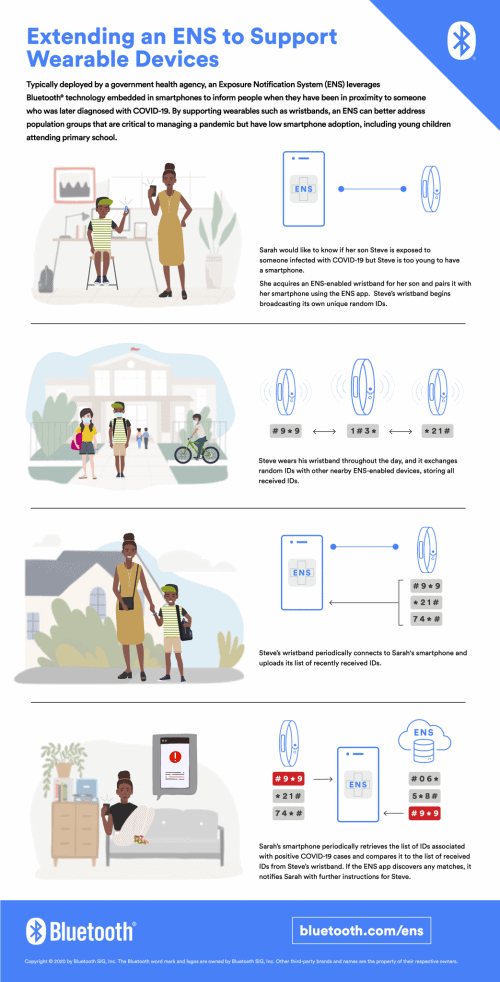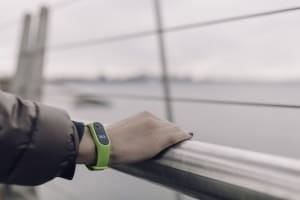Amid the current COVID-19 pandemic, many government health agencies worldwide have been using the Exposure Notification System (ENS) already embedded in smartphones in their contact tracing efforts, notifying people when they have been in close contact with someone who has been diagnosed with the virus.
However, aware that smartphones alone are not a practical approach to cover all segments of the population, the Bluetooth Special Interest Group (SIG) recently said it is working to create a specification that will extend ENS to wearable devices.
Formed in 1998, the Bluetooth SIG is the not-for-profit trade association that oversees Bluetooth technology. It supports more than 35,000 member companies, facilitating the collaboration of its members to create new and enhanced specifications that expand the technology, drives global interoperability via a world-class product qualification programme.
By extending an ENS to include wearables, such as wristbands, it can better address population groups where smartphone usage remains low, including children in primary school and older adults living in care facilities. An initial draft of the specification is expected to be released and available for review within the next few months.
“There are several population groups critical to managing the spread of diseases like COVID-19 with relatively low smartphone penetration, presenting a coverage challenge for smartphone-based Exposure Notification Systems,” said Elisa Resconi, a physics professor at the Technical University of Munich now leading research on non-pharmaceutical interventions against COVID-19. “We believe including wearable devices in an ENS would be a very effective method for extending its reach to support these important groups.”
 Over 130 Bluetooth member companies have joined the Bluetooth SIG Exposure Notification Working Group (ENWG) to define a standardised method for adding support for wearable devices while preserving the same privacy and security protections of the ENS.
Over 130 Bluetooth member companies have joined the Bluetooth SIG Exposure Notification Working Group (ENWG) to define a standardised method for adding support for wearable devices while preserving the same privacy and security protections of the ENS.
The ENWG is open to all Bluetooth SIG member companies and serves as a centralised forum for discussion on the effective use of Bluetooth technology in slowing the spread of COVID-19 and other infectious diseases.
“It is incredibly inspiring to see the Bluetooth community’s collaboration in finding and creating innovative ways to leverage Bluetooth technology to address the COVID-19 pandemic,” said Mark Powell, CEO of the Bluetooth SIG. “We are grateful for the dedication and commitment of the Bluetooth members and proud of their work on this important effort.”
A global standard for simple, secure wireless connections Bluetooth technology is included in more than 4 billion products shipped each year. Since its formation in 1998, the Bluetooth community has continued to expand the capabilities of Bluetooth — powering innovation, creating new markets, and redefining communication worldwide. Today, Bluetooth is the wireless technology of choice for developers in many solution areas, including audio streaming, data transfer, location services, and large-scale device networks.



